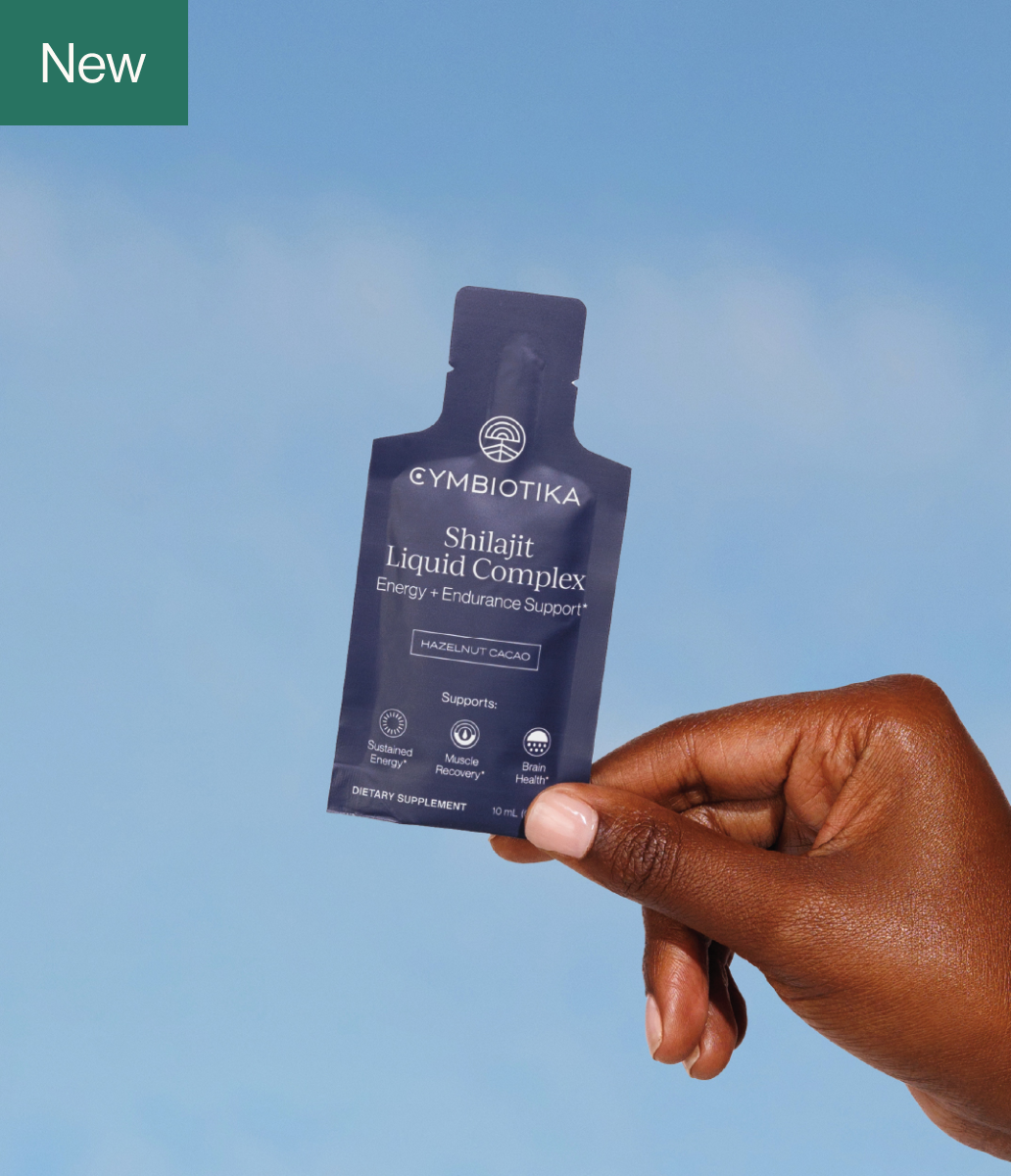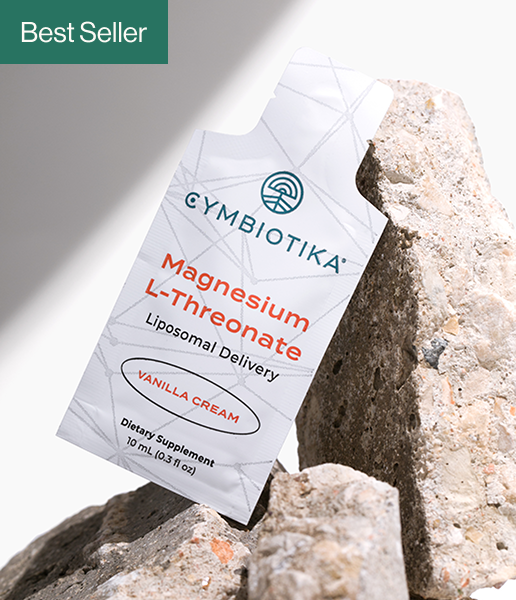
SULFORAPHANE
“Sulforaphane is an isothiocyanate occurring in stored form as glucoraphanin in cruciferous vegetables such as cabbage, cauliflower, and kale, and at high levels in broccoli especially in broccoli sprouts. Glucoraphanin requires the plant enzyme myrosinase for converting it into sulforaphane. Sulforaphane is metabolized through mercapturic acid pathway, being conjugated with glutathione and undergoes further biotransformation, yielding metabolites. Sulforaphane is extensively investigated and is in the interest in medicine for its health benefits. It has been shown that sulforaphane may protect against various types of cancer, may also decrease the risk of cardiovascular disease, and help in autism and osteoporosis.” (1)
“There is robust epidemiological evidence for the beneficial effects of broccoli consumption on health, many of them clearly mediated by the isothiocyanate sulforaphane. Present in the plant as its precursor, glucoraphanin, sulforaphane is formed through the actions of myrosinase, a β-thioglucosidase present in either the plant tissue or the mammalian microbiome. Since first isolated from broccoli and demonstrated to have cancer chemoprotective properties in rats in the early 1990s, over 3000 publications have described its efficacy in rodent disease models, underlying mechanisms of action or, to date, over 50 clinical trials examining pharmacokinetics, pharmacodynamics and disease mitigation.” (6)
“Discovery of Sulforaphane as a Bioactive Isothiocyanate: Sulforaphane was described in the middle of the last century, as an antibiotic, and was isolated from red cabbage, and from the western USA rangeland weed hoary cress. Various groups have since synthesized it, but Talalay and Zhang were the first to isolate it from broccoli and to demonstrate its cancer protective properties. Its biogenic precursor, glucoraphanin, was then found in abundance in broccoli sprouts and sulforaphane was confirmed to be active in animal carcinogenesis models. Structure-activity evaluation of a series of over 100 synthetic analogs made by Posner and colleagues did not find a more potent inducer of cytoprotective (Phase 2) enzymes than sulforaphane, and indeedeme sulforaphane remains one of, if not, the most potent naturally occurring inducers yet discovered. We and many others have identified subsequently multiple pathways and metabolic consequences of this molecule’s presence in mammalian cells, tissues, and in the human body.”(6)
“Over the years, sulforaphane (SFN), found in cruciferous vegetables, has been shown to have chemopreventive activity in vitro and in vivo. SFN protects cells from environmental carcinogens and also induces growth arrest and/or apoptosis in various cancer cells. Recent studies suggest that SFN can also affect the epigenetic control of key genes and greatly influence the initiation and progression of cancer. This research may provide a basis for the clinical use of SFN for cancer chemoprevention and enable us to design preventive strategies for cancer management, reduce cancer development and recurrence, and thus improve patient survival.”(2)
“Autism spectrum disorder (ASD), characterized by both impaired communication and social interaction, and by stereotypic behavior, affects about 1 in 68, predominantly males. The medico-economic burdens of ASD are enormous, and no recognized treatment targets the core features of ASD. In a placebo-controlled, double-blind, randomized trial, young men (aged 13-27) with moderate to severe ASD received the phytochemical sulforaphane (n = 29)--derived from broccoli sprout extracts--or indistinguishable placebo (n = 15). The effects on behavior of daily oral doses of sulforaphane (50-150 µmol) for 18 wk, followed by 4 wk without treatment, were quantified by three widely accepted behavioral measures completed by parents/caregivers and physicians: the Aberrant Behavior Checklist (ABC), Social Responsiveness Scale (SRS), and Clinical Global Impression Improvement Scale (CGI-I). Initial scores for ABC and SRS were closely matched for participants assigned to placebo and sulforaphane. After 18 wk, participants receiving placebo experienced minimal change (<3.3%), whereas those receiving sulforaphane showed substantial declines (improvement of behavior): 34% for ABC (P < 0.001, comparing treatments) and 17% for SRS scores, a significantly greater number of participants receiving sulforaphane had improvement in social interaction, abnormal behavior, and verbal communication. Upon discontinuation of sulforaphane, total scores on all scales rose toward pretreatment levels. Dietary sulforaphane, of recognized low toxicity, was selected for its capacity to reverse abnormalities that have been associated with ASD, including oxidative stress and lower antioxidant capacity, depressed glutathione synthesis, reduced mitochondrial function and oxidative phosphorylation, increased lipid peroxidation, and neuroinflammation.”(5)
“SFN is one of the most frequently studied plant-derived isothiocyanate organosulfur compounds. It has been reported to exhibit a wide range of biological effects including antioxidant (Fahey and Talalay, 1999[10]), antimicrobial (Johansson et al., 2008[19]), anticancer (Amjad et al., 2015[4]), anti-inflammatory (Greaney et al., 2016[14]), anti-aging (Sikdar et al., 2016[45]), neuroprotective (Tarozzi et al., 2013[47]), and antidiabetic (Lee et al., 2012[26]).
SFN shows a range of biological activities and health benefits in humans, has been found to be a very promising chemopreventive agent against not only a variety of cancers such as breast, prostate, colon, skin, lung, stomach, and bladder but also against cardiovascular and neurodegenerative diseases and diabetes (Yang et al., 2016[53]).” (7)
“ALI is a disease characterized by direct or indirect damage to lung epithelial and endothelial cells. It was originally considered that the root cause of ALI is cell activation by pathogenic factors and bodily fluids, which cause inflammatory response syndrome, and pathological processes such as alveolar collapse, an imbalance in the ventilation/perfusion ratio and a decrease in lung compliance. Sulforaphane as an agonist of nuclear factor-E2-related factor 2 (Nrf2), is extracted from cruciferous vegetables (such as broccoli, brussels sprouts and cabbage). It has previously been demonstrated that sulforaphane exerts protective effects on multiple organs, such as the liver, lungs, kidneys, heart and nervous system by activating Nrf2. Nrf2 is an important transcription factor and a key regulator of the activation of antioxidant genes to exogenous stimulations and is an important regulator of cell oxidation. It can regulate the expression of peroxiredoxins, generation II metabolic enzymes, enhance the ability of cells to remove ROS, maintain the oxidation-reduction equilibrium status in cells, and reduce oxidative damage through interaction with ARE. Nrf2/ARE is an edogenous antioxidant stress pathway. It plays an important role in the treatment of a variety of diseases. It has been demonstrated that Nrf2 is a promising target for the treatment of ALI. In the present study, sulforaphane increased Nrf2 gene expression in the lungs of mice with LPS-induced ALI. Chi et al demonstrated that sulforaphane reduced apoptosis and protected against liver injury-induced ischemic reperfusion by activating the Nrf2/ARE pathway. Lin et al revealed that sulforaphane suppressed LPS-induced inflammation through the Nrf2 pathway in mouse peritoneal macrophages. In conclusion, the findings of this study demonstrate that sulforaphane protects against LPS-induced ALI in mice by exerting anti-inflammatory effects, by mediating the production of NF-κB, COX-2, PGE2 and NO and upregulating Nrf2 expression. Moreover, the present findings provide a scientific foundation for the use of sulforaphane as a prophylactic treatment for ALI in clinical settings.”(8)
“A growing awareness of the mechanisms by which phytochemicals can influence upstream endogenous cellular defence processes has led to intensified research into their potential relevance in the prevention and treatment of disease. Pharmaceutical medicine has historically looked to plants as sources of the starting materials for drug development; however, the focus of nutraceutical medicine is to retain the plant bioactive in as close to its native state as possible. As a consequence, the potency of a nutraceutical concentrate or an extract may be lower than required for significant gene expression. The molecular structure of bioactive phytochemicals to a large extent determines the molecule's bioavailability. Polyphenols are abundant in dietary phytochemicals, and extensive in vitro research has established many of the signalling mechanisms involved in favourably modulating human biochemical pathways. Such pathways are associated with core processes such as redox modulation and immune modulation for infection control and for downregulating the synthesis of inflammatory cytokines. SFN, an aliphatic isothiocyanate, emerges as a phytochemical with comparatively high bioavailability. A number of clinical trials have demonstrated its ability to produce favourable outcomes in conditions for which there are few satisfactory pharmaceutical solutions, foreshadowing the potential for SFN as a clinically relevant nutraceutical. Although myrosinase-inert broccoli sprout extracts are widely available, there now exist myrosinase-active broccoli sprout supplements that yield sufficient SFN to match the doses used in clinical trials.” (9)
“The History and Evolution of Sulforaphane Research: It is twenty-five years since the identification and isolation of the transcription factor, Nrf2 (coded by the gene nuclear factor erythroid 2-related factor 2), was first described in the scientific literature. In the ensuing years, Nrf2 has become a focus of active research on mechanisms of defence in mammalian cells; Figure 2 illustrates the upward trend in SFN research over the period [74]. The role of Nrf2 in human cells is very relevant to the subject matter of this review because SFN significantly activates Nrf2 and as such has the potential to modulate the expression of genes associated with redox balance, inflammation, detoxification, and antimicrobial capacity, all key components of the upstream cellular defence processes.” (9)
“Some of the age-related decline in function can be restored with Nrf2 activation by SFN. Studies in aged mice showed that age-related changes in Th1 immunity could be restored using SFN as an intervention. This finding is compatible with the growing recognition of the importance of the Nrf2 pathway in innate immunity and has implications for human health. A 2017 clinical pilot study examined the effect of an oral dose of 100 μmol (17.3 mg) encapsulated SFN on GSH induction in humans over 7 days [158]. Pre- and post measurement of GSH in blood cells that included T cells, B cells, and NK cells showed an increase of 32%. Interestingly, the researchers found that in the pilot group of nine participants, age, sex, and race did not influence the outcome.” (9)
“SFN at the Gut-Immune Interface: Because SFN has been shown to inhibit NF-κB in endothelial cells [202], it is likely the same effect would occur in other epithelial cells such as the intestinal epithelium, thereby retarding local inflammation. Whereas SFN directly activates cytosolic Nrf2, its action on NF-κB is to inhibit NF-κB binding to the DNA [203]. NF-κB plays a key role in the immune system where it is activated by a series of events initiated by Toll-like receptors (TLR) on epithelial cells [204]. TLR2 and TLR4 can identify distinct molecular patterns on the cell wall of invading pathogens. These patterns act as innate sensors but also shape and bridge innate and adaptive immune responses.” (9)
“Cross Talk between Nrf2 and NF-κB - SFN is associated with cellular defences via mechanisms governed by the transcription factors Nrf2 and NF-κB; molecular cross talk between these transcription factors has been reported [63]. Imbalance between Nrf2 and NF-κB is associated with a significant number of diseases across various body systems, and these relationships are the subject of extensive research in cancer biology in particular.” (9)
“Immune Modulation (Anti-Inflammatory Effects):Activation of TLR4 by the endotoxin released by gram-negative bacteria results in signalling that activates NF-κB with subsequent generation of inflammatory cytokines [204]. Toll-like receptor (TLR4) pathways mediate proinflammatory cytokine and interferon responses [207]. SFN has been shown in a thiol-dependent manner to suppress TLR4 oligomerization. Saturated fatty acids are known to act as ligands for TLR4 in macrophages and adipocytes, with these signals in turn regulating various proinflammatory transcription factors [208]. More recently, in-depth investigation of the microbiome has uncovered the pathways that link these very signals to cardiometabolic effects, thereby connecting the gut-immune relationship to systemic disease [13].” (9)
“Effect of SFN on Inflammation Markers in Humans: In a recent study using 30 grams of fresh broccoli sprouts incorporated daily into the diet, two key inflammatory cytokines were measured at four time points in forty healthy overweight people [209]. The levels of both interleukin-6 (Il-6) and C-reactive protein (CRP) declined over the 70 days during which the sprouts were ingested. These biomarkers were measured again at day 90, wherein it was found that Il-6 continued to decline, whereas CRP climbed again. When the final measurement was taken at day 160, CRP, although climbing, had not returned to its baseline value. Il-6 remained significantly below the baseline level at day 160. The sprouts contained approximately 51 mg (117 μmol) GRN, and plasma and urinary SFN metabolites were measured to confirm that SFN had been produced when the sprouts were ingested.” (9)
“Effect of SFN on Inflammation Markers in Type 2 Diabetes Patients: Where the study described above by Lopez-Chillon et al. investigated healthy overweight people to assess the effects of SFN-yielding broccoli sprout homogenate on biomarkers of inflammation, Mirmiran et al. in 2012 had used a SFN-yielding supplement in T2DM patients [210]. Although the data are not directly comparable, the latter study using the powdered supplement resulted in significant lowering of Il-6, hs-CRP, and TNF-α over just 4 weeks”
“SFN: Its Antimicrobial Effects: The complex signalling mechanisms discussed above will apply in a general sense to the modulation of core upstream processes that occur in human cells in general. In the following section, specific actions by SFN exhibit an antimicrobial effect on a common gut pathogen.
More recently, SFN has been shown mechanistically and clinically to have a direct bactericidal effect on the Helicobacter pylori bacterium via two separate mechanisms. Approximately half of the global population is thought to be colonised by the H. pylori organism, making its classification as either a pathogen or a commensal uncertain; as such, it is sometimes described as a pathobiont [212]. H. pylori is shown to be symptomatic in some people and not in others, indicating that there may be individual control mechanisms that keep the organism in check. The popular dietary practice of salting food can also contribute to its pathogenicity. Sodium chloride, in the presence of H. pylori, becomes a cancer promoter, enhancing chronic gastric mucosal membrane inflammation [213].”(9)
“H. pylori infection may be asymptomatic but by raising the pH of the gastric contents via continuous synthesis of ammonia, it contributes to impaired protein digestion and macromineral malabsorption. Iron absorption is well known to be impaired in the presence of H. pylori [214].
Consideration of the upstream processes that cells use to maintain homeostasis might indicate that the redox-inflammation couple might be associated. Recently, Yanaka, who had undertaken some of the earlier H. pylori trials using SFN as an intervention, reviewed several of the mechanisms by which Nrf2 activators may exhibit their antimicrobial effect [215]. Yanaka argues that significant protection to the gastrointestinal tract is afforded by the modulation of oxidative stress and inflammation as a result of simultaneous activation of Nrf2 and downregulation of NF-κB [216].” (9)
“In their 2009 study, Yanaka et al. demonstrated that broccoli sprouts suppressed the upregulation of the inflammatory markers, TNF-α and IL-1β in the gastric mucosa by H. pylori infection in a wild type but not in Nrf2−/− mice, suggesting a systemic protective effect against gastritis that was the result of Nrf2 activation [217].” (9)
“Over the past fifteen years, two clinical trials have demonstrated SFN's bactericidal effect on the H. pylori organism, a bacterium which is associated with gastric reflux and cancer [217, 218]. In the initial study, forty-eight H pylori-infected subjects were given 70 grams fresh broccoli sprouts daily [217]. Three markers of H. pylori infection declined within eight weeks to below the diagnostic cutoff point. However, once the intervention had stopped, the levels of H pylori returned to baseline levels after 8 weeks. SFN has been demonstrated to exhibit urease activity, thereby potentially providing a clinical alternative to pharmaceutical antibiotics to control H. pylori gastric infections [220].”(9)
“Infection control is another key activity of the immune system and is closely associated with NF-κB. In this vein, SFN has been shown to inhibit the H. pylori bacterium, a significant gastric cancer risk factor that is prevalent globally. Since pharmaceutical solutions to H. pylori eradication are only partially and temporarily effective, the need for a safe, effective therapy is pressing. SFN has been found to inhibit and may possibly even eradicate H. pylori in humans via two separate mechanisms.”(9)
“Epigenetic mechanisms play a pivotal role in the expression of genes and can be influenced by both the quality and quantity of diet. Dietary compounds such as sulforaphane (SFN) found in cruciferous vegetables and epigallocatechin-3-gallate (EGCG) in green tea exhibit the ability to affect various epigenetic mechanisms such as DNA methyltransferase (DNMT) inhibition, histone modifications via histone deacetylase (HDAC), histone acetyltransferase (HAT) inhibition, or noncoding RNA expression. Regulation of these epigenetic mechanisms has been shown to have notable influences on the formation and progression of various neoplasms. We have shown that an epigenetic diet can influence both cellular longevity and carcinogenesis through the modulation of certain key genes that encode telomerase and p16. Caloric restriction (CR) can also play a crucial role in aging and cancer. Reductions in caloric intake have been shown to increase both the life- and health-span in a variety of animal models. Moreover, restriction of glucose has been demonstrated to decrease the incidence of age-related diseases such as cancer and diabetes. A diet rich in compounds such as genistein, SFN and EGCG can positively modulate the epigenome and lead to many health benefits. Also, reducing the quantity of calories and glucose in the diet can confer an increased health-span, including reduced cancer incidence.” (10)
“High glucose; Nrf2-AMPK signaling; Pancreatic cancer; Sulforaphane. Results: SFN can inhibit pancreatic cancer cell growth, promote apoptosis, curb colony formation and temper the migratory and invasion ability of pancreatic cancer cells. Mechanistically, excessive ROS production induced by SFN activated AMPK signaling and promoted the translocation of Nrf2, resulting in cell viability inhibition of pancreatic cancer. Pretreatment with compound C, a small molecular inhibitor of AMPK signaling, reversed the subcellular translocation of Nrf2 and rescued cell invasion ability. With nude mice and pancreatic cancer transgenic mouse, we identified SFN could inhibit tumor progression, with smaller tumor size and slower tumor progression in the SFN treatment group. Conclusion: Our study not only elucidates the mechanism of SFN-induced inhibition of pancreatic cancer in both normal and high glucose condition, but also testifies the dual-role of ROS in pancreatic cancer progression. Collectively, our research suggests that SFN may serve as a potential therapeutic choice for pancreatic cancer.” (12)
FOUND IN THE FOLLOWING PRODUCT(S)
CLINICAL RESEARCH
1. Isothiocyanate from Broccoli, Sulforaphane, and Its Properties
2. Chemopreventive activity of sulforaphane
3. Molecular Targets of Dietary Phenethyl Isothiocyanate and Sulforaphane for Cancer Chemoprevention
4. Dietary Sulforaphane in Cancer Chemoprevention: The Role of Epigenetic Regulation and HDAC Inhibition
5. Sulforaphane treatment of autism spectrum disorder (ASD)
6. Broccoli or Sulforaphane: Is It the Source or Dose That Matters?
7. Current potential health benefits of sulforaphane
8. Sulforaphane exerts anti-inflammatory effects against lipopolysaccharide-induced acute lung injury in mice through the Nrf2/ARE pathway
9. Sulforaphane: Its "Coming of Age" as a Clinically Relevant Nutraceutical in the Prevention and Treatment of Chronic Disease
10. Epigenetic linkage of aging, cancer and nutrition
11. Molecular targets of dietary phenethyl isothiocyanate and sulforaphane for cancer chemoprevention
12. Activation of Nrf2 by Sulforaphane Inhibits High Glucose-Induced Progression of Pancreatic Cancer via AMPK Dependent Signaling
You've unlocked a FREE gift!
Select a FREE product of your choice!
Golden Mind order processes.
Topical Magnesium order processes.
You're away from a FREE gift!
Add any of the products below to unlock your free gift.









More subscriptions, more savings
1
10% off
2
15% off
3
20% off
4
25% off
5
30% off
Want to save? Add a subscription to get 10% off on it!













